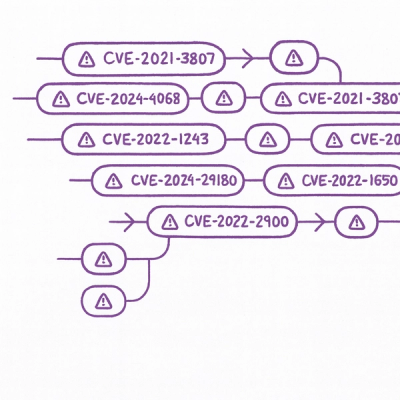
Security News
New Website “Is It Really FOSS?” Tracks Transparency in Open Source Distribution Models
A new site reviews software projects to reveal if they’re truly FOSS, making complex licensing and distribution models easy to understand.
= Validates Captcha
A captcha verification approach for Rails 2.3 apps, directly integrated into ActiveRecord's validation mechanism and providing helpers for ActionController and ActionView.
RDoc documentation (including this README as start page) can be found at http://m4n.github.com/validates_captcha . Validates Captcha was first announced {here}[http://m4n.github.com/2009/09/28/introducing-validates-captcha.html].
By default, question/answer captcha challenges are used, but you can also switch to the built-in image captcha providers. If you stick to ValidatesCaptcha’s API, you can even implement your own captcha challenge provider.
== Basic Usage
Validates Captcha extends ActiveRecord, ActionController and ActionView with helper methods that make it a snap to integrate captcha verification in your Rails application.
Step #1: Extend your view’s form with the necessary captcha display and input logic.
<% form_for @comment do |f| %> <%= f.error_messages %>
<!-- standard input fields: -->
<p>
<%= f.label :name %><br />
<%= f.text_field :name %>
</p>
<!-- ... -->
<!-- now something new: -->
<p>
<%= f.label :captcha %><br />
<%= f.captcha_challenge # displays the question or image %>
<%= f.captcha_field # displays the input field %>
</p>
<p>
<%= f.submit 'Create' %>
</p>
<% end %>
Step #2: Tell the controller that you want to validate captchas.
class CommentsController < ApplicationController validates_captcha
def create
# scaffold comment creation code ...
end
# more actions here ...
end
This activates captcha validation in every action of the controller whenever an instance of class +Comment+ is saved.
Step #3: There's no step three!
To summarize: Put the following in your view.
<%= f.captcha_challenge %> <%= f.captcha_field %>
And what you see below in the corresponding controller.
validates_captcha
Done.
== Customization
Because the +validates_captcha+ controller method internally creates an around filter, you can (de)activate captcha validation for specific actions.
validates_captcha :only => [:create, :update] validates_captcha :except => :reset
The class for which captcha validation is activated is derived from the name of the controller. So putting +validates_captcha+ in a +UsersController+ validates instances of the +User+ class.
You can customize the validated class using the +validates_captcha_of+ method.
class ArticlesController < ApplicationController validates_captcha_of Post validates_captcha_of :blog_entries, :except => :persist validates_captcha_of 'users', :only => :store end
Two kinds of errors are added to the model if captcha validation fails: +:blank+ if no captcha solution is submitted and +:invalid+ if a captcha solution is submitted but does not solve the captcha's challenge. You can localize the error messages for the captcha as you usually do for the other attributes.
models: comment: attributes: captcha_solution: blank: 'must not be empty' invalid: 'does not match the code displayed on the image'
What if the image captcha's text is unreadable or a user does not know the correct answer to the captcha question? There's also a form helper method for captcha regeneration available. You can call it like this.
Don't know the answer? <%= f.regenerate_captcha_challenge_link %>
This generates an anchor tag that, when clicked, generates a new captcha challenge and updates the display. It makes an AJAX request to fetch a new challenge and updates the question/image after the request is complete.
+regenerate_captcha_challenge_link+ internally calls Rails' +link_to_remote+ helper method. So it relies on the Prototype javascript framework to be available on the page. As of version 0.9.8 you can pass :jquery => true as an option to render Javascript that's based on jQuery.
The anchor's text defaults to 'New question' (question challenge) and 'Regenerate Captcha' (image challenge) respectively. You can set this to a custom value by providing a +:text+ key in the options hash.
<%= f.regenerate_captcha_challenge_link :text => 'Another captcha, please' %>
Apart from controllers, you can activate captcha validation for a model using the class level +with_captcha_validation+ method added to ActiveRecord::Base.
Comment.with_captcha_validation do @comment = Comment.new(...) @comment.save end
This activates captcha validation on entering the block and deactivates it on leaving the block.
Two new attribute-like methods are added to ActiveRecord: +captcha_challenge+ and +captcha_solution+. Those are made +attr_accessible+. The former is initialized to a randomly generated captcha challenge on instantiation.
For a record to be valid, the value assigned to +captcha_solution=+ must
solve the return value of +captcha_challenge+. Within a +with_captcha_validation+
block, calling +valid?+ (as is done by +save+, +update_attributes+, etc.)
will also validate the value of +captcha_solution+ against +captcha_challenge+.
Outside +with_captcha_validation+, no captcha validation is performed.
== Question/answer challenge captchas (default provider)
You can set the captcha provider to use question/answer challenges with the code below. It is best to put this in a Rails initializer.
ValidatesCaptcha.provider = ValidatesCaptcha::Provider::Question.new # this is the default
If you want to replace the few default questions and answers, here's how to do it.
ValidatesCaptcha::Provider::Question.questions_and_answers = { "What's the opposite of bad?" => "good", "What are the initials of the creator of Rails?" => "DHH", "What's the sum of 3 and four?" => ["7", "seven"], ... }
== Dynamic image challenge captchas
You can set the captcha provider to use dynamically created image challenges
with the code below. Dynamic means that the captcha image is created on invocation.
If you want to utilize this provider, it is best to put this in a Rails initializer.
ValidatesCaptcha.provider = ValidatesCaptcha::Provider::DynamicImage.new
By default, image captchas have a length of 6 characters and the text displayed on the captcha image is created by randomly selecting characters from a predefined alphabet constisting of visually distinguishable letters and digits.
The number of characters and the alphabet used when generating strings can be customized. Just put the following in a Rails initializer and adjust the values to your needs.
ValidatesCaptcha::StringGenerator::Simple.alphabet = '01' ValidatesCaptcha::StringGenerator::Simple.length = 8
== Static image challenge captchas
You can set the captcha provider to use static image challenges with the code below. Static means that there exist some pre-created images in a folder accessible by the web application. If you want to utilize this provider, it is best to put this in a Rails initializer.
ValidatesCaptcha.provider = ValidatesCaptcha::Provider::StaticImage.new
There is a Rake tast for creating the static captcha images:
rake validates_captcha:create_static_images
This will create 3 images for you. To create a different number of images, provide a COUNT argument:
rake validates_captcha:create_static_images COUNT=50
If you want to customize the path the images get saved to (or other stuff), please see the documentation for ValidatesCaptcha::Provider::StaticImage.
== Extensibility
Don't like the built-in challenges? It's easy to extend them or to implement your own.
Validates Captcha delegates tasks like string and image generation, encryption/decryption of captcha codes, and responding to captcha requests to dedicated backend classes.
Those classes can easily be replaced with your custom implementations. So you can achieve stronger encryption, can use a word list as image captcha text generation source, or can replace the captcha image generator with one that creates images that are harder to crack.
Please see the documentation of the following classes for further information.
Or you can implement a custom captcha challenge provider and assign it to ValidatesCaptcha#provider=. See the documentation on ValidatesCaptcha::Provider for an example.
== Dependencies
Using a Rack middleware to speed up the request/response cycle when fetching captcha images, Validates Captcha requires Rails version 2.3 or greater.
The image captcha provider uses ImageMagick's +convert+ command to create
the captcha. So a recent and properly configured version of ImageMagick
must be installed on the system. The version used while developing was 6.4.5.
But you are not bound to ImageMagick. If you want to provide a custom image
generator, take a look at the documentation for
ValidatesCaptcha::ImageGenerator::Simple on how to create your own.
== Installation
You can install Validates Captcha as a Gem with
% [sudo] gem install validates_captcha
and then configure it in your +environment.rb+ file as shown below.
Rails::Initializer.run do |config| # ... config.gem 'validates_captcha' # ... end
Or you can install it as a Rails plugin (discouraged) with the following command.
% ./script/plugin install git://github.com/m4n/validates_captcha.git
== Download
The latest version of Validates Captcha can be found at http://github.com/m4n/validates_captcha
Documentation can be generated from its distribution directory with the following command.
% [sudo] rake rdoc
Tests can be executed from its distribution directory with the following command.
% [sudo] rake test
== Hacking
Validates Captcha is {hosted on Github}[http://github.com/m4n/validates_captcha]. Pull requests are welcome.
== Bugs
Please report bugs on the {Github issue tracker}[http://github.com/m4n/validates_captcha/issues] for this project.
== License
Validates Captcha is released under the MIT license.
== Copyright
Copyright (c) 2009 Martin Andert
FAQs
Unknown package
We found that validates_captcha demonstrated a not healthy version release cadence and project activity because the last version was released a year ago. It has 1 open source maintainer collaborating on the project.
Did you know?

Socket for GitHub automatically highlights issues in each pull request and monitors the health of all your open source dependencies. Discover the contents of your packages and block harmful activity before you install or update your dependencies.

Security News
A new site reviews software projects to reveal if they’re truly FOSS, making complex licensing and distribution models easy to understand.

Security News
Astral unveils pyx, a Python-native package registry in beta, designed to speed installs, enhance security, and integrate deeply with uv.

Security News
The Latio podcast explores how static and runtime reachability help teams prioritize exploitable vulnerabilities and streamline AppSec workflows.